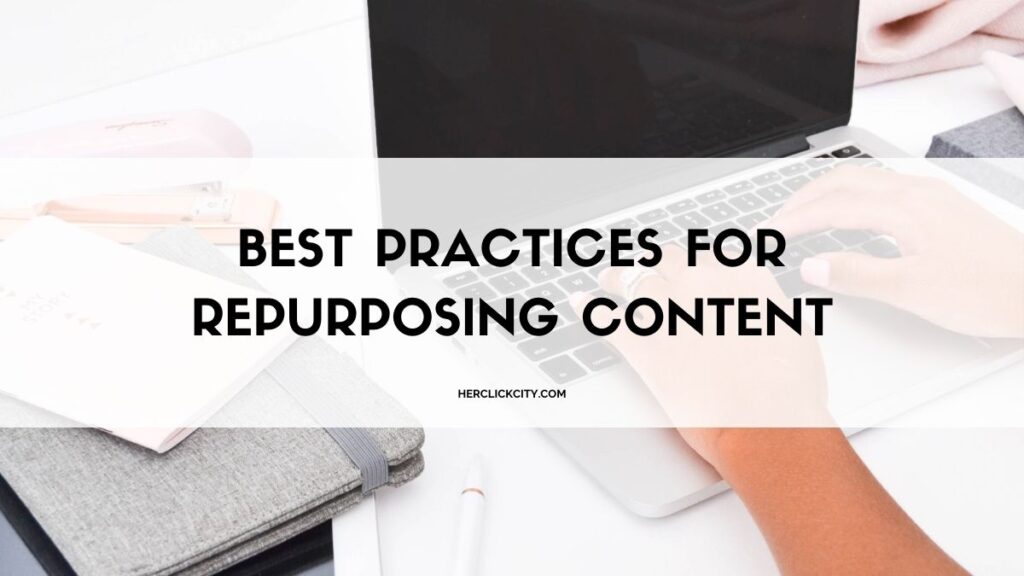So you already know what content repurposing is and why you should be doing it. But you might still be wondering if there are any “dos-and-don’ts” or best practices to keep in mind. Here is my list of best practices for repurposing content, to be sure you’re doing it right!
1. Only repurpose content that you have the rights to
You need to have the right to repurpose a piece of content. Repurposing content that does not belong to you might amount to plagiarism. Your best bet is to work with your already-existing content.
If you don’t have enough content to work with, you can purchase PLR content and repurpose them in as many ways as you like. Another option would be to ask for permission from the original owner of the content. But if you want a heap of ready, niche-specific content to repurpose, buying PLR content will work best for you.
2. Focus on repurposing evergreen content
Evergreen content is anything that is relevant and useful today, tomorrow or years from today. Evergreen content reaches out to your audience now and in the future. This contrasts with trending topics that may lose relevance after a short while, or seasonal content, which is only relevant at specific times of the year.
One of the best practices for repurposing content is to prioritize evergreen content. This is because evergreen content has more potential to attract new customers or views no matter when they see it. In addition, this type of content can be used for multiple campaigns and on various channels—again, an advantage for those just beginning their journey with repurposing.
Some examples of evergreen content include:
- How-to videos
- Top 10 lists
- Beginner’s guides
- Common mistakes
- Tips and tricks
3. Consider starting with long-form content
Working with long-form content is one of the best practices for repurposing content because it gives you a lot more material to work with. You convert one blog post into several short videos, Instagram posts, a Twitter thread, etc.
If you’re looking for some ideas for how to repurpose your long-form content into something new and exciting, here are a couple of ways to do it:
- Break down the entire blog post into smaller subtopics and create multiple posts on each subtopic. This will also give you something specific to share each day on social media rather than sharing one large post all at once.
- Turn the longer pieces of information in your blog posts into shorter highlights and publish them as tweets or Instagram captions. You can also use Twitter’s threads feature to link several tweets together, to give information on a single topic. This approach works best when you have specific tips or statistics in your original piece that are easy to pull out separately from the rest of the article.
4. Tweak your content to suit different media channels
Twitter: Start with a brief introduction, then follow with a thread that summarises each of your key points. Include a call-to-action at the end.
Instagram stories: Keep the text short and sweet; along with an engaging visual. One sentence should do the trick!
Instagram posts: Use catchy visuals and an engaging caption. Your blog post intro, list of bullet points, and a call-to-action can work as your Instagram caption.
5. Don’t be afraid to experiment.
One of the greatest things about content marketing is that it’s constantly changing. New technologies, platforms, and types of content are always popping up, so you’re sure to never get bored! But that also means there’s a bit of a learning curve to stay on top of your game.
In applying the best practices for content repurposing, don’t be afraid to experiment with new formats or ideas. You may not hit the nail on the head right away—in fact, you probably won’t—but each time, you learn something new and bring that knowledge with you into your next project. So what if your first attempt falls flat? It’s all part of the learning process.
The more you try out new tactics and approaches, the better chance you have at finding something that works well for your audience. You should also keep an eye on your analytics to find your best-performing content, format, or channel. This will help you to create a more effective repurposing workflow.
Conclusion
There you have it! You now know the best practices for repurposing content. Repurposing content is a simple way to maximize the value of your initial investment in content creation. It’s also an easy way to provide your audience with many different ways to consume your content. So go forth, be confident and make your own repurposed content!

